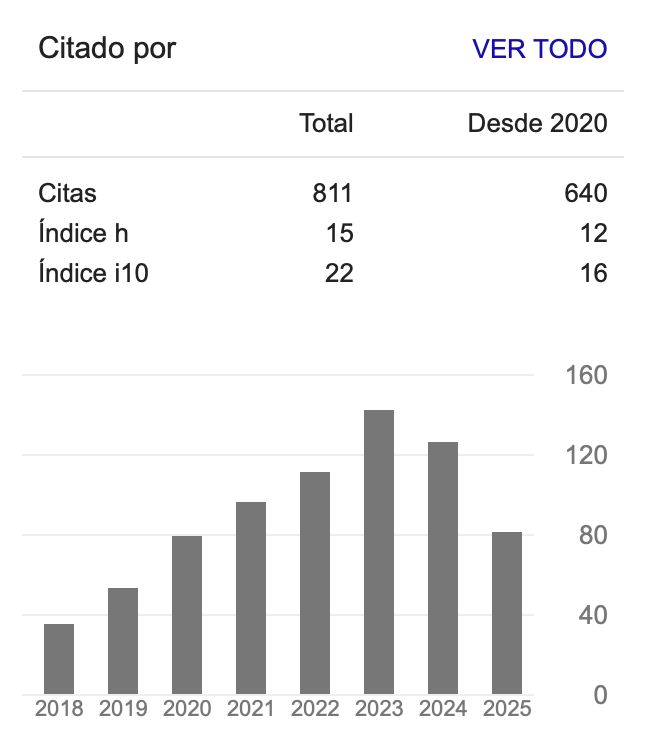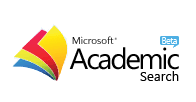Evolution of Beliefs About Teaching of Chemistry Teachers in a Teacher Training Program
Evolución de las creencias sobre la enseñanza de los profesores de Química en un programa de formación docente
DOI:
https://doi.org/10.54104/papeles.v16n32.1922Keywords:
Beliefs, Teacher Preparation, Novice Teacher Development, Pedagogical Knowledge, ChemistryAbstract
Introduction: The teachers’ learning beliefs and conceptions define the two types of the activities they carry out with their students: student-centered or teacher-centered. Novice teachers have a teacher-centered approach, so teacher education programs can promote the change towards a student-approach. However, there are just a few studies that document this change, particularly with high school teachers in the area of natural sciences. Do teaching beliefs change throughout the pre-service teachers education program? Methodology: A qualitative study was carried out using the instrument Drawing of a Science Teacher, to document the evolution of beliefs about teaching that teachers enrolled in a teacher training program have. Results and discussion: This research shows that after taking courses in the psychopedagogical and teaching practice area, the majority of teachers change their focus from teacher-centered teaching to student-centeredness. Conclusion: Teacher training programs are essential to enhance teaching skills to reflect on the design of their teaching and their most frequent strategies. It is important to highlight that, although many student teachers initially adopt an egocentric approach, after teacher training a change is experienced due to a student-centered orientation.
Downloads
References
Ainsworth, S., Stieff, M., DeSutter, D., Tytler, R., Prain, V., Panagiotopoulos, D., Wigmore, P., van Joolingen, W., Heijnes, D., Leenaars, F. y Puntambekar, S. (2016). Exploring the value of drawing in learning and assessment. En C. K. Looi, J. L. Polman, U. Cress y P. Reimann (eds.), Transforming learning, empowering learners: The International Conference of the Learning Sciences (ICLS) (vol. 2, pp. 1082-1089). International Society of the Learning Sciences. https://doi.dx.org/10.22318/icls2016.170
Capps, D. K. y Crawford, B. A. (2013). Inquiry-based instruction and teaching about nature of science: Are they happening? Journal of Science Teacher Education, 24(3), 497-526. https://doi.org/10.1007/s10972-012-9314-z DOI: https://doi.org/10.1007/s10972-012-9314-z
Connolly, M. R., Lee, Y. G. y Savoy, J. N. (2018). The effects of doctoral teaching development on early-career STEM scholars’ college teaching self-efficacy. CBE-Life Sciences Education, 17(1), ar14. https://doi.org/10.1187/cbe.17-02-0039 DOI: https://doi.org/10.1187/cbe.17-02-0039
Delgado Casallas, Á. (2013). Escuchando las voces de los profesores. Papeles, 5(10), 21-41. https://revistas.uan.edu.co/index.php/papeles/article/view/626/536
Ebert-May, D., Derting, T. L., Henkel, T. P., Middlemis Maher, J., Momsen, J. L., Arnold, B. y Passmore, H. A. (2015). Breaking the cycle: Future faculty begin teaching with learner-centered strategies after professional development. CBE-Life Sciences Education, 14(2), ar22. https://doi.org/10.1187/cbe.14-12-0222 DOI: https://doi.org/10.1187/cbe.14-12-0222
Emery, N. C., Maher, J. M. y Ebert-May, D. (2019). Longitudinal study of persistence in professional development outcomes of early career biology faculty. bioRxiv, 785857. https://doi.org/10.1101/785857 DOI: https://doi.org/10.1101/785857
Fraiman, J. A. (2020). Reflexiones metacientíficas acerca de la enseñanza de la ciencia: Posibles aportes desde la perspectiva comunicativa de Jürgen Habermas. Papeles, 12(24), 27-45. https://doi.org/10.54104/papeles.v12n24.833 DOI: https://doi.org/10.54104/papeles.v12n24.833
Gencer, S. y Akkus, H. (2022). The changes in pre-service chemistry teachers’ orientations towards chemistry teaching during chemistry teaching method courses. Journal of Turkish Science Education, 19(3), 830-851. https://doi.org/10.36681/ DOI: https://doi.org/10.36681/tused.2022.152
Gómez Marrugo, E. (2024). Prácticas sociales, maestros y educación media en Bogotá. Papeles, 16(31), e1635. https://doi.org/10.54104/papeles.v16n31.1635 DOI: https://doi.org/10.54104/papeles.v16n31.1635
Hofer, E. y Lembens, A. (2019). Putting inquiry-based learning into practice: How teachers changed their beliefs and attitudes through a professional development program. Chemistry Teacher International, 1(2), 20180030. https://doi.org/10.1515/cti-2018-0030 DOI: https://doi.org/10.1515/cti-2018-0030
Instituto Nacional para la Evaluación de la Educación. (2015). Los docentes en México: Informe 2015. https://www.inee.edu.mx/wp-content/uploads/2018/12/P1I240.pdf
Instituto Nacional para la Evaluación de la Educación. (2018). La educación obligatoria en México: Informe 2018. https://www.inee.edu.mx/wp-content/uploads/2018/12/P1I243.pdf
Jones, G. y Carter, G. (2007). Science teacher attitudes and beliefs. En S. Abel y N. Lederman (eds.), Handbook of research on science education (pp. 1067-1104). Lawrence Erlbaum Associates. https://doi.org/10.4324/9780203824696 DOI: https://doi.org/10.4324/9780203824696
MADEMS. (2020). Mapa curricular. https://madems.posgrado.unam.mx/plan/mapa.html
Markic, S. y Eilks, I. (2010). First-year science education student teachers’ beliefs about student-and teacher-centeredness: Parallels and differences between chemistry and other science teaching domains. Journal of Chemical Education, 87(3), 335-339. https://doi.org/10.1021/ed8000864 DOI: https://doi.org/10.1021/ed8000864
Markic, S., Eilks, I. y Valanides, N. (2008). Developing a tool to evaluate differences in beliefs about science teaching and learning among freshman science student teachers from different science teaching domains: A case study. Eurasia Journal of Mathematics, Science and Technology Education, 4(2), 109-120. https://doi.org/10.12973/ejmste/75311 DOI: https://doi.org/10.12973/ejmste/75311
Namoco, S. y Zaharudin, R. (2021). Pedagogical beliefs and learning assessment in science: Teacher’s experiences anchored on theory of reasoned action. Journal of Turkish Science Education, 18(2), 304-319. https://doi.org/10.36681/tused.2021.67 DOI: https://doi.org/10.36681/tused.2021.67
Pajares, M. F. (1992). Teachers’ beliefs and educational research: Cleaning up a messy construct. Review of Educational Research, 62(3), 307-332. https://doi.org/10.3102/00346543062003307 DOI: https://doi.org/10.3102/00346543062003307
Peme-Aranega, C., De Longhi, A. L., Baquero, M. E., Mellado, V. y Ruiz, C. (2006). Creencias explícitas e implícitas, sobre la ciencia y su enseñanza y aprendizaje, de una profesora de química de secundaria. Perfiles Educativos, 28(114), 131-151. https://www.scielo.org.mx/pdf/peredu/v28n114/n114a6.pdf DOI: https://doi.org/10.22201/iisue.24486167e.2006.114.61491
Perrenoud, P. (2007). Diez nuevas competencias para enseñar. Graó.
Razo, A. E. (2018). La Reforma Integral de la Educación Media Superior en el aula: Política, evidencia y propuestas. Perfiles Educativos, 40(159), 90-106. https://doi.org/10.22201/iisue.24486167e.2018.159.58214 DOI: https://doi.org/10.22201/iisue.24486167e.2018.159.58214
Shulman, L. (1986). Those who understand: Knowledge growth in teaching. Educational Researcher, 15(2), 4-14. https://doi.org/10.3102/0013189X015002004 DOI: https://doi.org/10.3102/0013189X015002004
Talanquer, V. (2017). Tres elementos fundamentales en la formación de docentes de ciencias. Tecné, Episteme y Didaxis: TED, 41, 183-196. https://revistas.upn.edu.co/index.php/TED/article/view/6043/5005 DOI: https://doi.org/10.17227/01203916.6043
Thomas, J. A., Pedersen, J. E. y Finson, K. (2001). Validating the draw-a-science-teacher-test checklist (DASTT-C): Exploring mental models and teacher beliefs. Journal of Science Teacher Education, 12(4), 295-310. https://doi.org/10.1023/A:1014216328867 DOI: https://doi.org/10.1023/A:1014216328867
Trinidad, R. (2020). Las creencias de profesores de química de bachillerato sobre la enseñanza. Educación química, 31(2), 69-80. DOI: https://doi.org/10.22201/fq.18708404e.2020.2.72318
Universidad Privada del Norte. (2017, 16 de octubre). Yo colaboro, tú cooperas: Sobre aprendizaje colaborativo y cooperativo. https://blogs.upn.edu.pe/estudios-generales/2017/10/16/yo-colaboro-tu-cooperas-sobre-aprendizaje-colaborativo-y-cooperativo/
Weber, S., & Mitchell, C. (1996). Drawing ourselves into teaching: Studying the images that shape and distort teacher education. Teaching and Teacher Education, 12(3), 303-313. https://doi.org/10.1016/0742-051X(95)00040-Q DOI: https://doi.org/10.1016/0742-051X(95)00040-Q
Downloads
Published
-
Abstract356
-
PDF (Español)85
-
LENS (Español)18
-
XML (Español)33
How to Cite
Issue
Section
Categories
License
Copyright (c) 2024 Rufino Trinidad Velasco, Flor de María Reyes Cárdenas

This work is licensed under a Creative Commons Attribution-NoDerivatives 4.0 International License.






